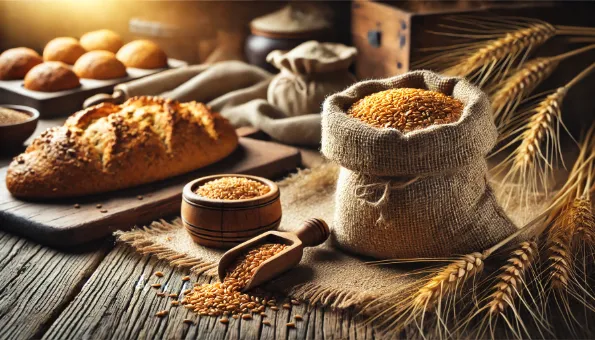Kamut (Khorasan Wheat): Ancient Grain with Nutty Flavor
Kamut is an ancient wheat variety rich in protein, minerals, and antioxidants, with a buttery, nutty taste.

What Is Kamut?
Kamut® is the trademarked name for khorasan wheat (*Triticum turgidum ssp. turanicum*). Its grains are about twice the size of modern wheat, with a rich, nutty, slightly buttery flavor.
Nutritional Profile
- **Protein:** Higher than common wheat (~14-17%)
- **Minerals:** Selenium, zinc, magnesium, iron
- **Vitamins:** B-complex (thiamine, niacin)
- **Antioxidants:** Polyphenols and carotenoids
- Contains **gluten**, not suitable for celiac disease
Health Benefits
- **Protein-rich:** Good for muscle repair and satiety
- **Mineral boost:** Selenium and zinc support immunity
- **Lower gluten load:** Some report better tolerance than modern wheat
- **Whole-grain benefits:** Supports heart and gut health
Potential Downsides
- **Contains gluten:** Not safe for celiac disease
- **Calorie dense:** Watch portion sizes if on low-calorie diet
- **Cost:** Often more expensive than regular wheat
How to Use
- **Cook whole grains**: soak overnight, simmer until tender (40–60 min)
- Use in **salads, pilafs, soups**
- Milled into flour for **breads, pasta, pancakes**
- Pair with roasted vegetables or hearty stews
Summary
Kamut is a flavorful, nutrient-dense ancient wheat—ideal for whole-grain lovers seeking variety, as long as gluten is tolerated.
- 1. Kamut
Kamut® ili khorasan pšenica – drevno zrno, krupnije od moderne pšenice, sa orašastim okusom

